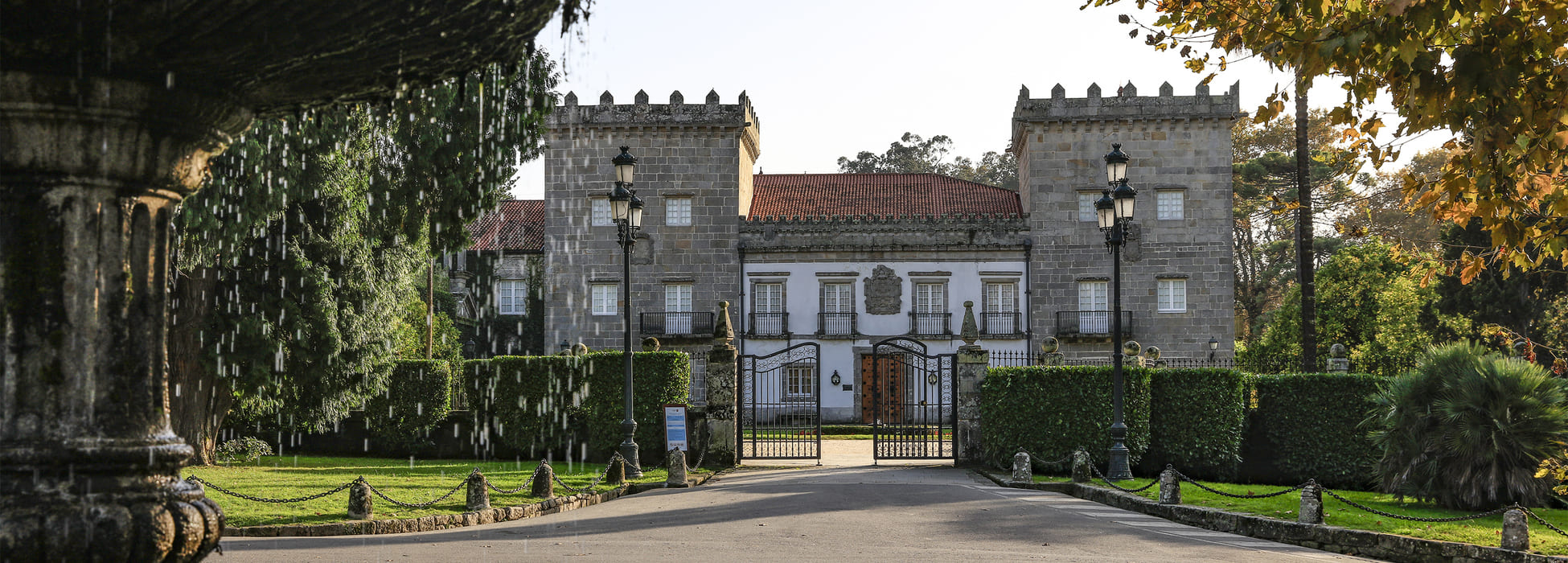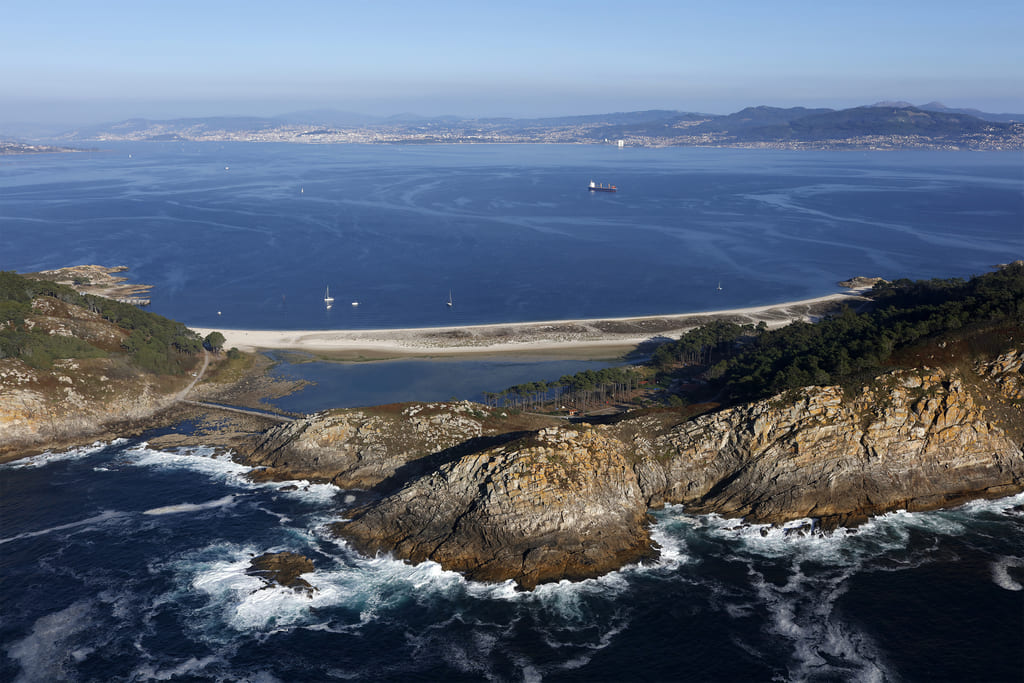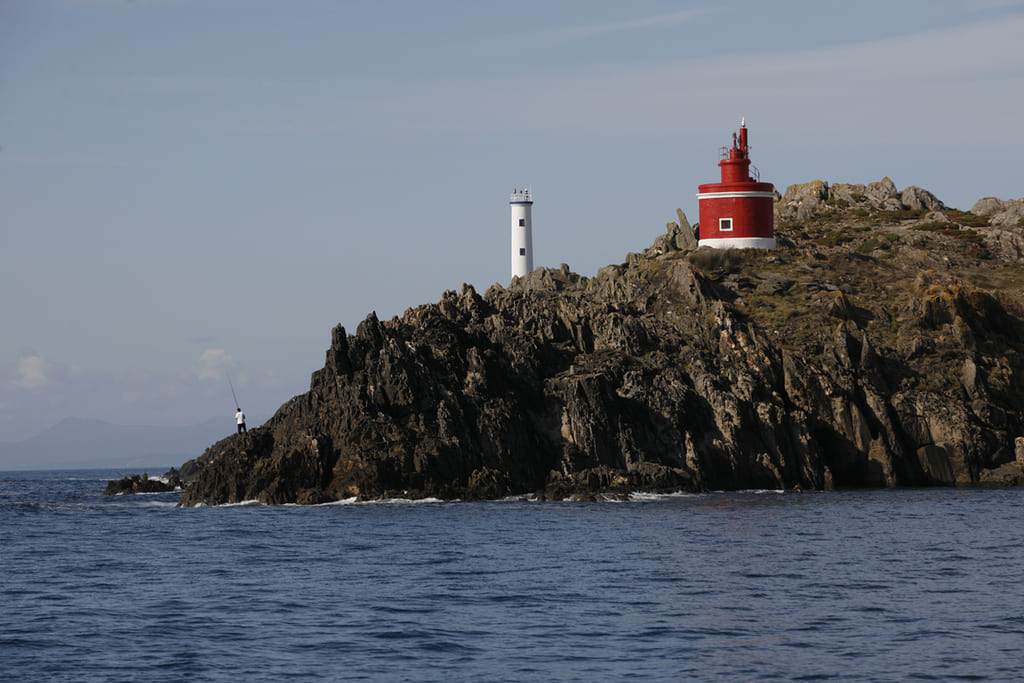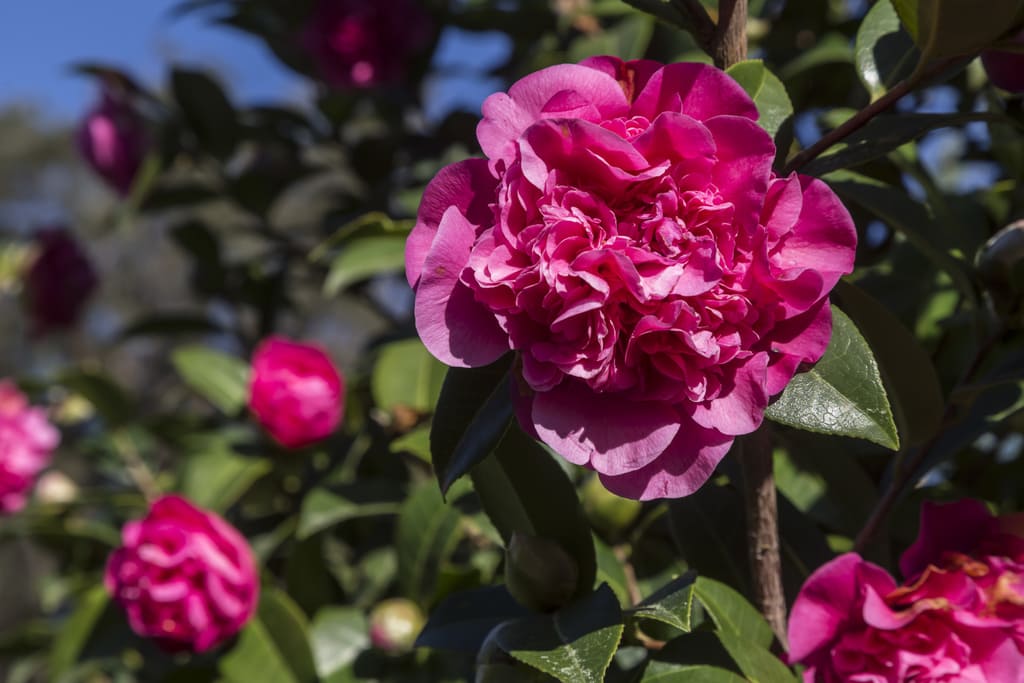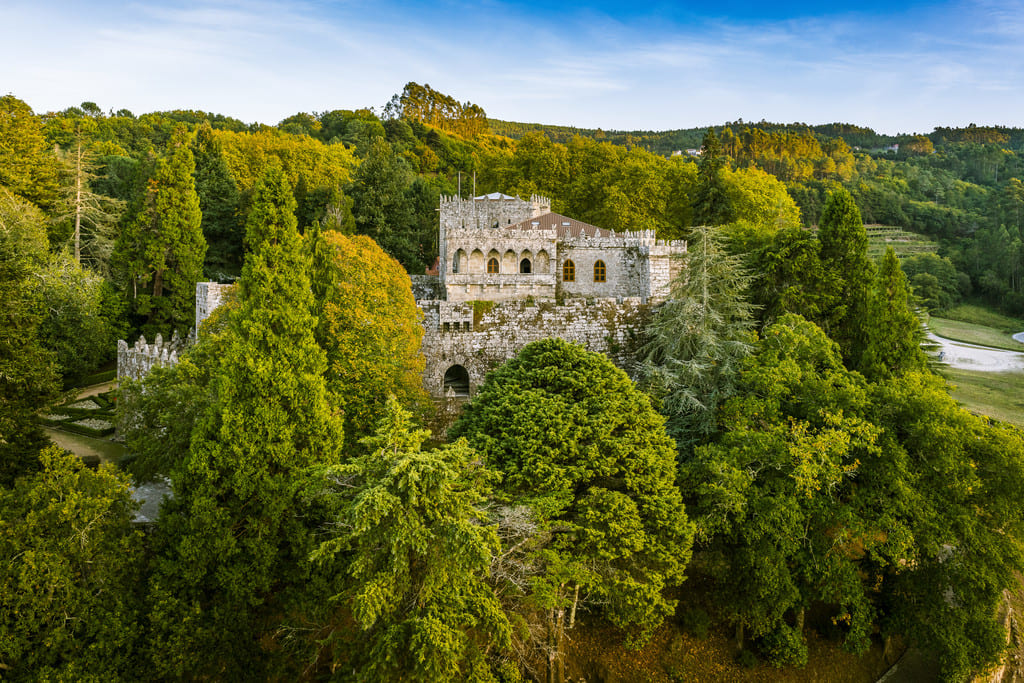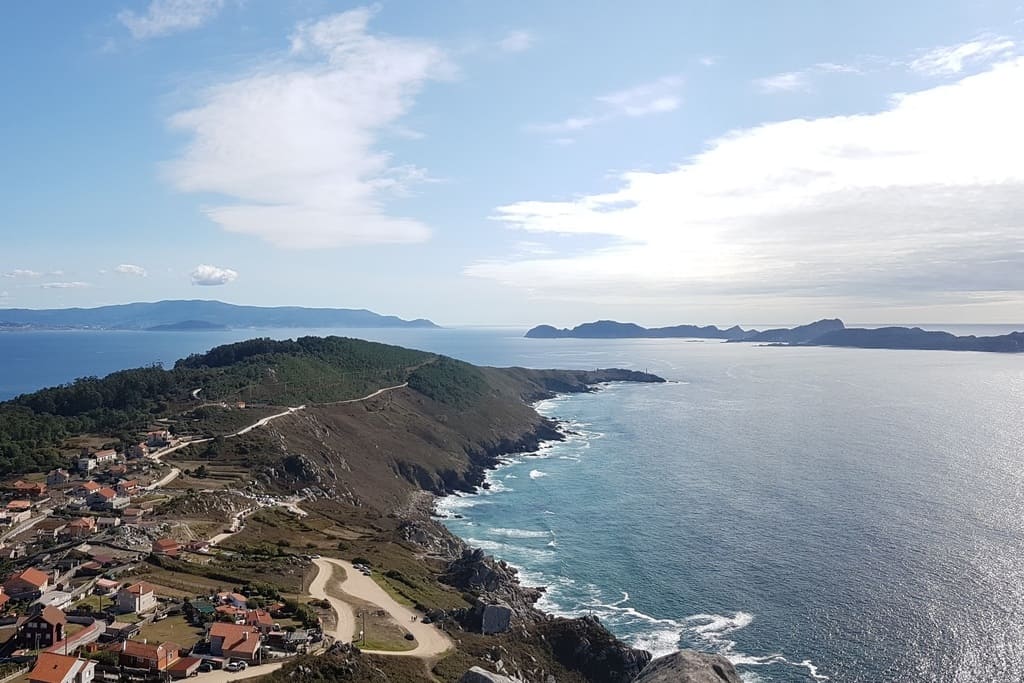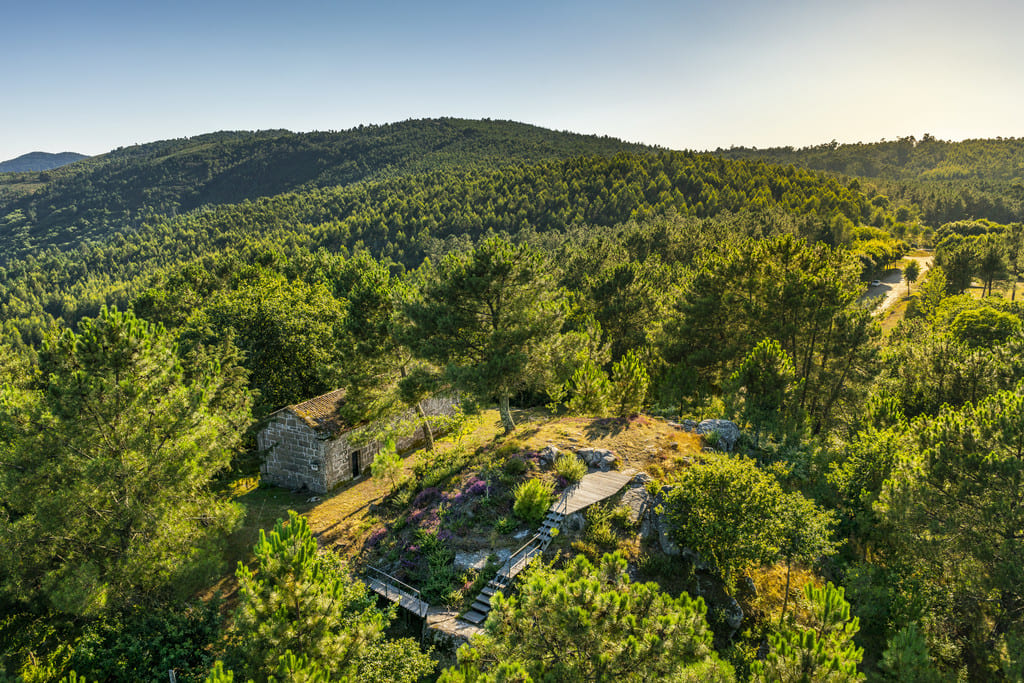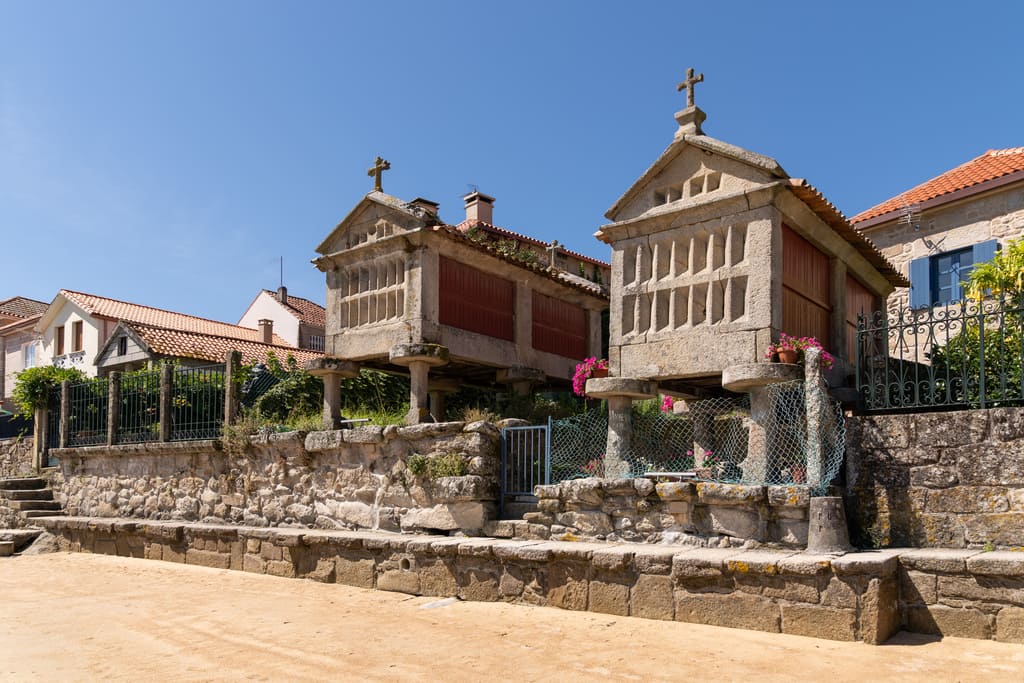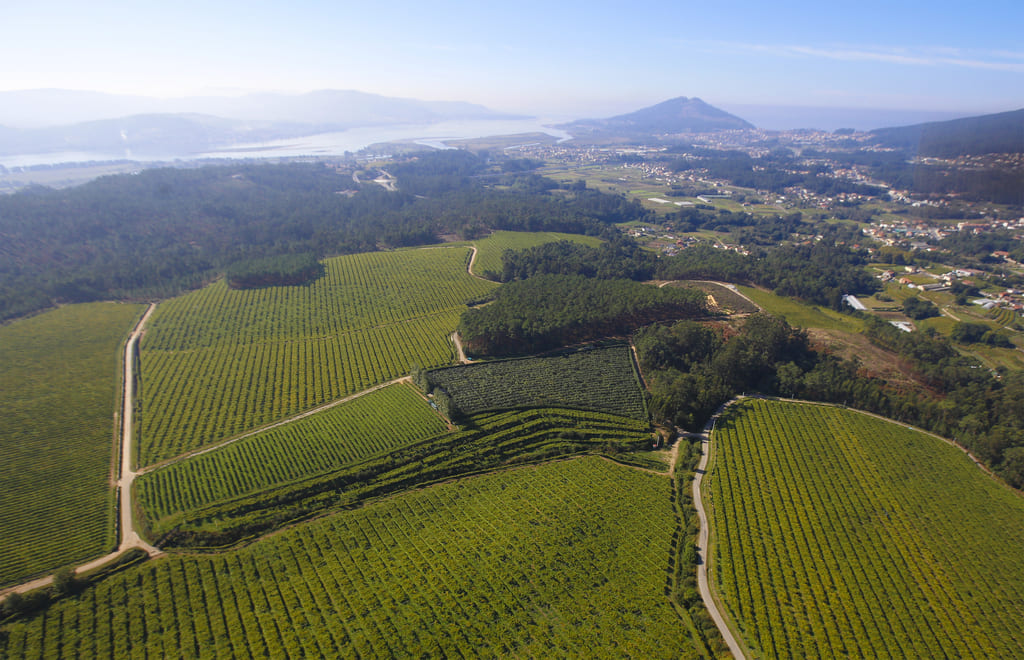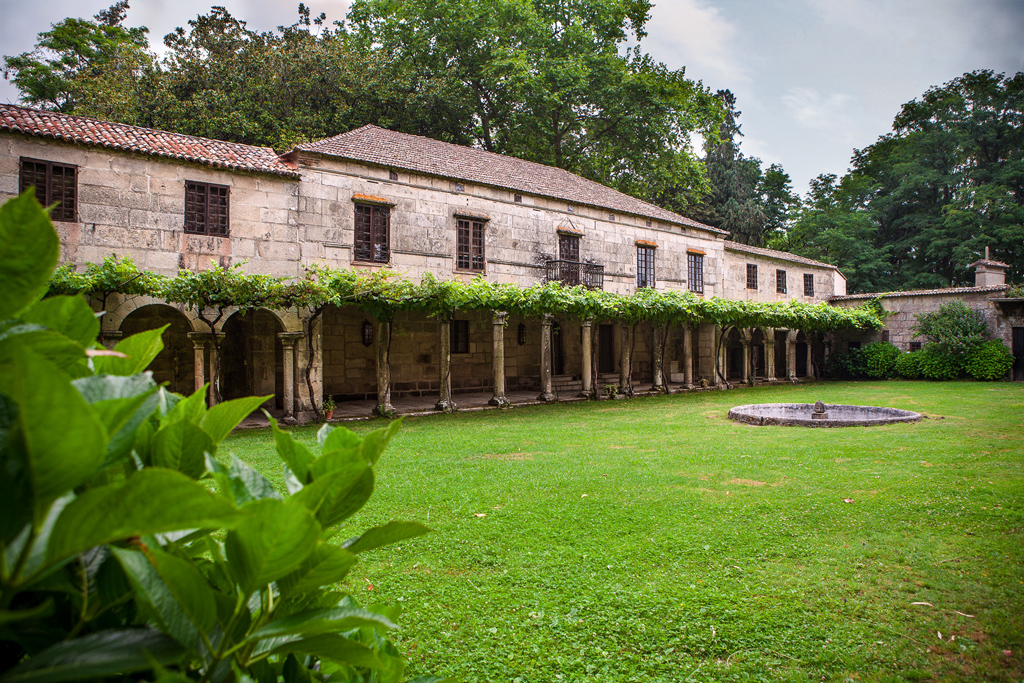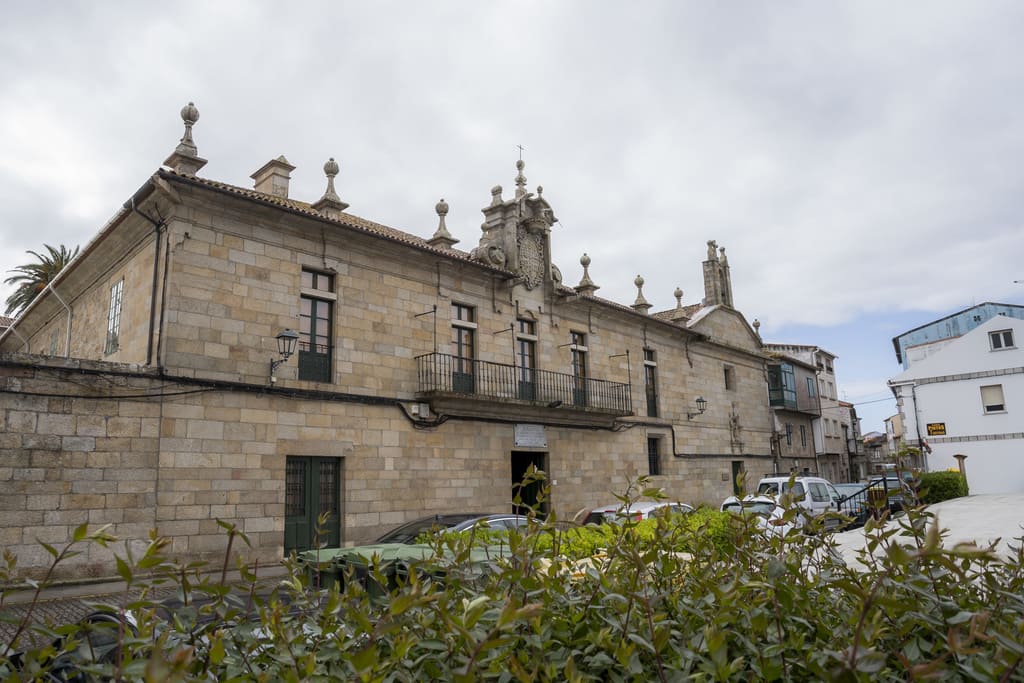The architecture, culture and botanical richness of the pazos of the province of Pontevedra will allow you to discover how the Galician noble families lived more than three centuries ago. Today, many of these manor houses host museums and wineries as well as gardens open to the public that boast plant species from the five continents and a queen: the camellia.
In the 17th century, the Galician pazos abandoned their defensive function and gradually became stately residences with a great architectural, landscape and botanical value. The province of Pontevedra has preserved outstanding constructions with more than three centuries of history. These buildings witnessed major historical events, welcomed great politicians and served as a venue for intellectual gatherings.
Power, culture and heritage are combined in this outstanding tour of the most important manor houses in As Rías Baixas, most of them turned into museums, wineries and spaces of great landscape value. In fact, three of them, namely A Saleta, Quinteiro da Cruz and Rubianes, are recognised as International Camellia Gardens of Excellence.
Chapels, horréos (typical Galician raised granary house), cruceiros (stone crosses), ponds, fountains and hundred-year-old trees enhance the magnificence of the pazos of Pontevedra.
Knock on their doors and discover an impressive historical heritage that has its origins in the Middle Ages. They have been able to reinvent themselves through vineyards, guided tours or restoration projects. You will find buildings from very different periods and architectural styles; with English or French gardens that will make you travel back in time and be immersed in the exciting palatial life of the 18th and 19th centuries.
Pazo de Oca (A Estrada)
In the parish of Santo Estevo de Oca, there used to be an old fortress dating from the 12th century, but the first remains of the building date from the middle of the 15th century, to the time of the first documented Lords of Oca, namely Álvaro de Oca and his son Suero. After being part of the heritage of the Dukes of Medinaceli, this estate, in the Baroque style, had been previously owned by different families such as Neira, Gayoso or the House of Camarasa.
Andrés Gayoso and his son Fernando undertook the refurbishment and enlargement of the building complex and estate. They also commissioned the creation of the two ponds that represent the central axis of its beautiful gardens. This splendour has an indisputable ally: water. It is also worth strolling along the lime tree path or wandering around the box hedges inspired by popular tales and songs.
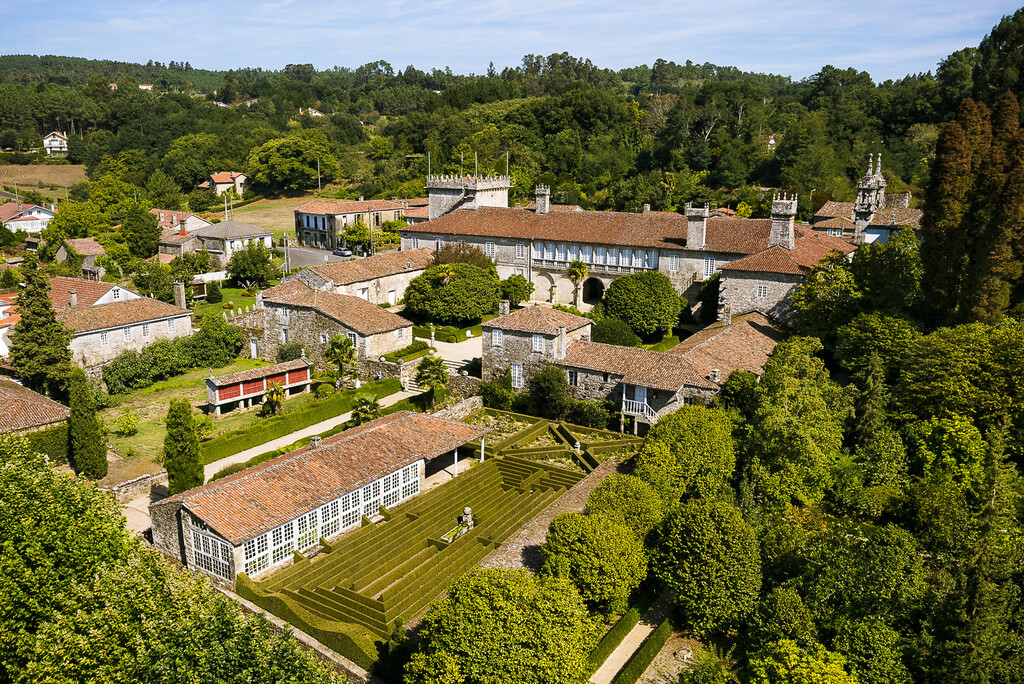
The Pazo de Oca, known as the Galician Versailles for its geometrical shape and the large number of species growing in the garden and declared Site of Cultural Interest (BIC), has preserved both its ornamental and productive nature. Thus, the property's ornamental plantations coexist with vineyards, kiwi vines and historic apple tree collections. It is, undoubtedly, one of the most majestic and best-preserved pazos in Galicia. It can be visited all year round. Moreover, you can rent one of its halls for special events.
Pazo Quiñones de León (Vigo)
The first references of the current Pazo Quiñones de León date from the 16th century. At that time, there was a medieval tower known as Lavandeira, owned by the Tavarés family. According to the inscription on the coat of arms of the family, placed at the main entrance, the current building dates from 1665 to 1670. Later, in the 19th century the building was renovated in a project commissioned by Fernando Quiñones de León and Francisco Martín. They refurbished the building as it is nowadays, and designed the beautiful gardens, which have been the meeting point of several generations of local people from Vigo.
In 1924, the property was donated to the city, and the park, formerly a private garden, was open to the public. Today, the garden comprises the access garden, the rose garden, the French garden, the English garden (also known as tea meadow), the sun room and the wood. In 1984, a project to improve and clean the garden was started: the road that divides the garden in two parts was enlarged and an artificial pond was created following the plans of the landscape architect Francisco de Sales.
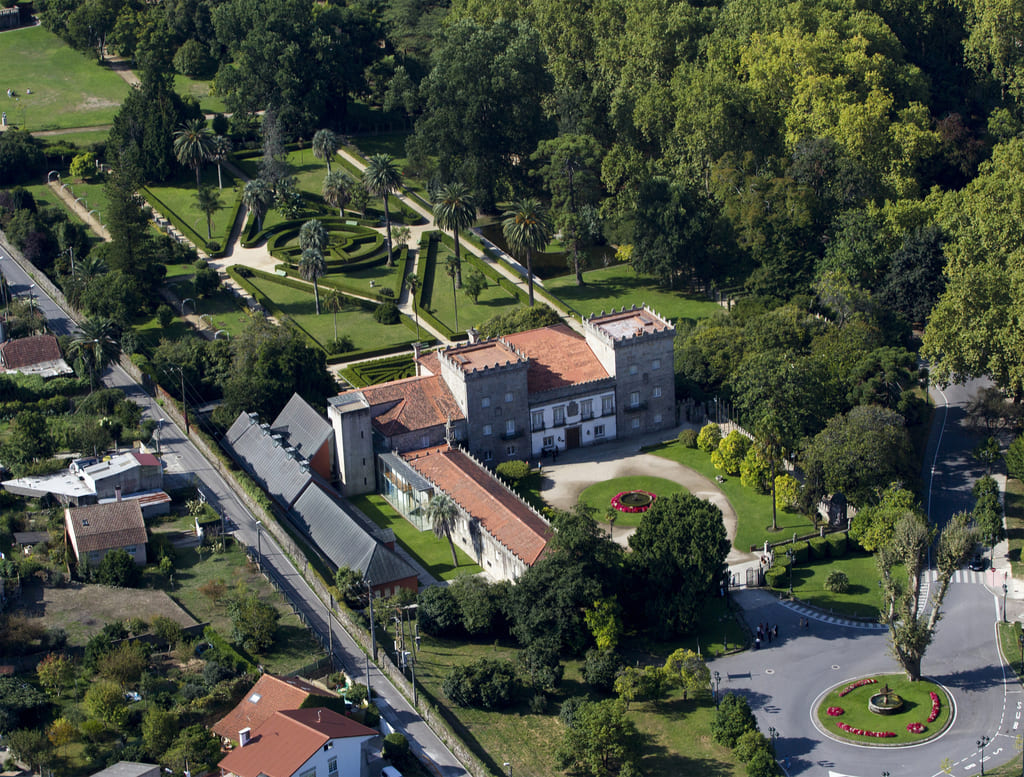
This historical garden has been listed as Site of Cultural Interest since 1955, and in 1991, it was transferred to the region of Galcia. The pazo hosts a museum with important collections of painting, sculpture and applied arts as well as other pieces that are part of the history of Vigo.
Pazo de Lourizán (Pontevedra)
The period of greatest splendour of the Pazo de Lourizán took place in the 19th century, when it was owned by the politician Eugenio Montero Ríos. He commissioned the architect Jenaro de la Fuente the restoration of the majestic building, which was surrounded by 54 hectares of land. The singular glazed galleries and upper balconies of the place were also added during this period. The first reference to the estate is a religious document of concord among clergymen dating from 1320.
The suggestive beauty of the building is enhanced by the fact that it was the political and social hub of the province in the early 20th century. In terms of architecture, its spectacular staircase, its adorned façade and its French-style slate roof stand out. It also has a large hórreo (typical Galician raised granary house) dating from the 18th century. It is worth strolling around the Xardín das Rías (garden of the Rías), with a grotto and a cascade in its first stretch, and a stream with meanders and bridges covered by a thick and high tree canopy.
The heirs of Montero Ríos could not afford to maintain the property. Thus, in the second decade of the 2oth century they sold it to the bank Caja de Ahorros Provincial. The pazo has been owned by the Pontevedra Provincial Council since the 1940s, and today is the headquarters of the Lourizán Forestry Research Centre.
Pazo de Rubianes (Vilagarcía)
Strolling around its grapevines and outstanding camellias can be an unforgettable experience. The origins of the property date from the Middle Ages. In the 12th century, the Caamaño family, of the House of Noia and founders of the town of Vilagarcía de Arousa, established on the coastal inlet Ría de Arousa. The pazo was founded in 1411 by García Caamaño and rebuilt 300 years later by Jacobo Ozores. It has a rectangular plan surrounded by the largest grapevine of the region of O Salnés.
In the 18th century, the Lord of the House of Rubianes was exiled to France. When he returned, the property was highly deteriorated and he decided to restore it with the help of a French architect who gave it its current appearance.
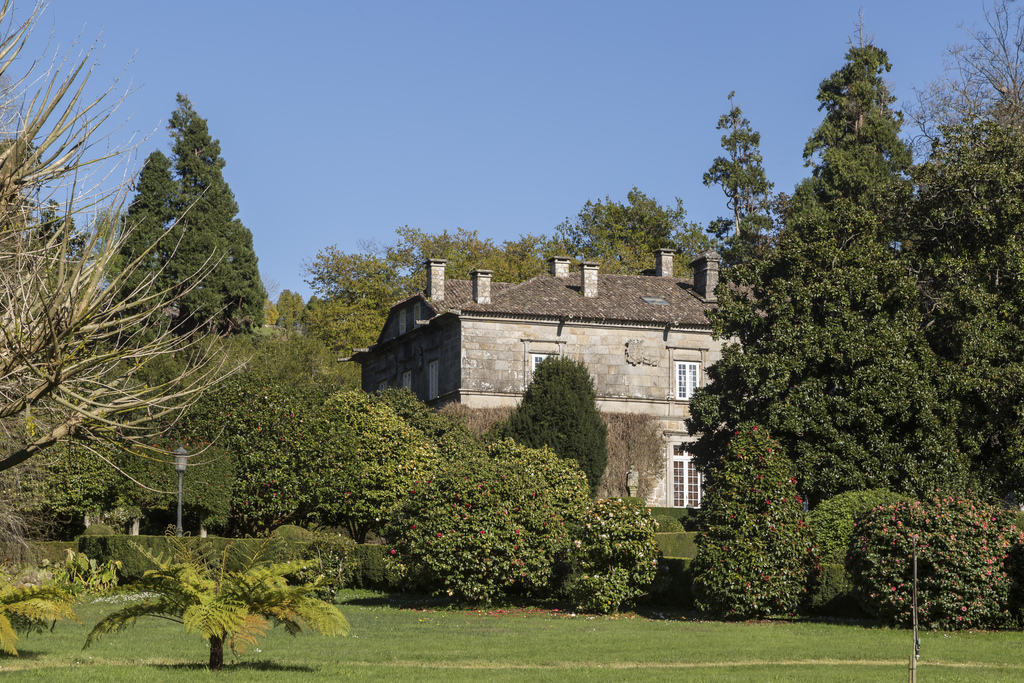
With an area of nearly 70 hectares, its vineyards are grown among camellias. It is believed that the first ornamental attempt made on the property took place in 1714, when the original building was transformed into a stately home. The frog pond, with its trellis and arbour, is the most important structure of the primitive garden. Its botanical park is today the International Camellia Garden of Excellence thanks to its more than 4,500 specimens and it is open to the public.
Pazo Quinteiro da Cruz (Ribadumia)
This old 18th-century farmhouse, an excellent example of Galician neoclassical architecture, is located in the very heart of O Salnés valley. In the 1970s, the Piñeiro Lago family, who would restore the pazo, the courtyard and the surrounding buildings, acquired the property. By the entrance, there is a spectacular 15-metre-long stone hórreo, one of the most important examples in Galicia of this type of construction.
The property also preserves a chapel and a Romanesque baptismal font from the 12th century. However, the most outstanding element is the International Camellia Garden of Excellence, designed at the beginning of the 20th century by the French landscape architect Dorgambide and surrounded by a wood of oaks, chestnuts, and pine and laurel trees. The Pazo Quinteiro da Cruz also has Albariño grape vineyards, which are used to produce their own wine in an adjoining winery.
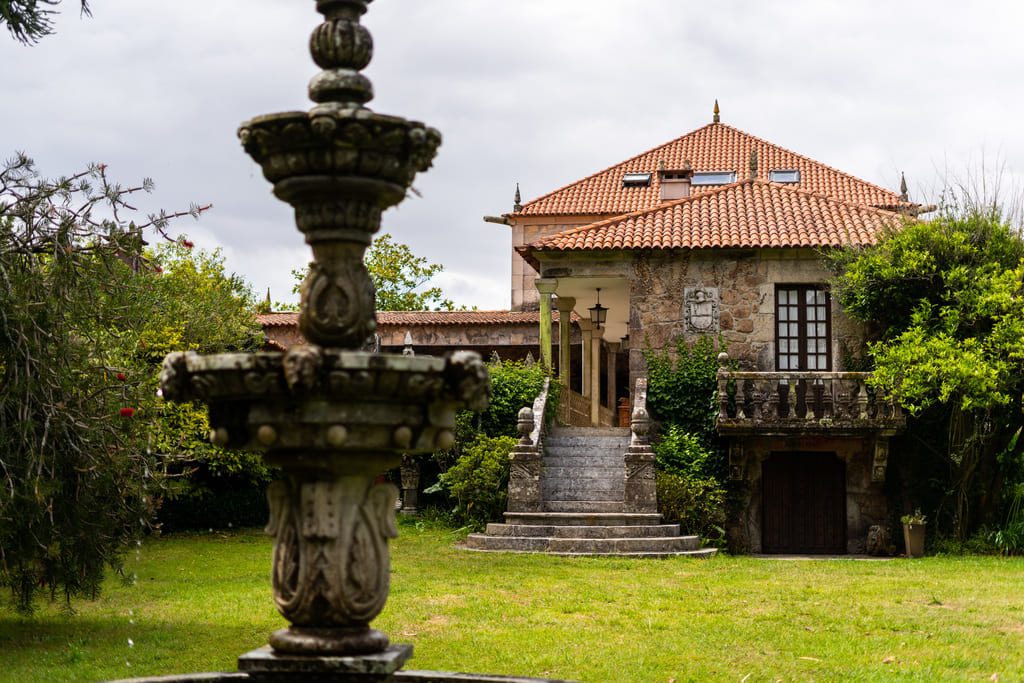
This stately building is an open-air museum with more than 300 different botanical species from the five continents. The Bosque das Palabras (wood of words), inaugurated in 2014 by the writer Nélida Piñón, and the so-called oriental garden were recently created. It is possible to visit this garden all year round. And, at the end of your visit, you can taste a glass of Albariño white wine Quinteiro da Cruz or a green tea, also produced in the pazo.
Pazo de Liñares (Lalín)
This Galician manor house was founded in the 17th century by Álvaro Núñez Taboada. It was inhabited during the 20th century, although in its last stage it was a holiday house. Regarding its architecture, the most important elements of the interior of the building are the library, a weapons display and a Romanesque baptismal font. The large balcony of the Baroque-style building stands out. In the outside, there is a chapel, the houses of the servants, two furnaces, a shed, a hórreo (raised granary house) and a dovecote.
Joaquín Loriga, distinguished pilot who flew from Madrid to Manila in 17 stages and 33 days, was born in this pazo. It is the most majestic manor house in the region of Deza and one of the gems of Galician rural architecture. The popular Galician writer Emilia Pardo Bazán referred to it as the “palacio del recuerdo” (palace of remembrance). Its last owner was José Cano Otero, former president of the Galician Academy of Medicine and Surgery.
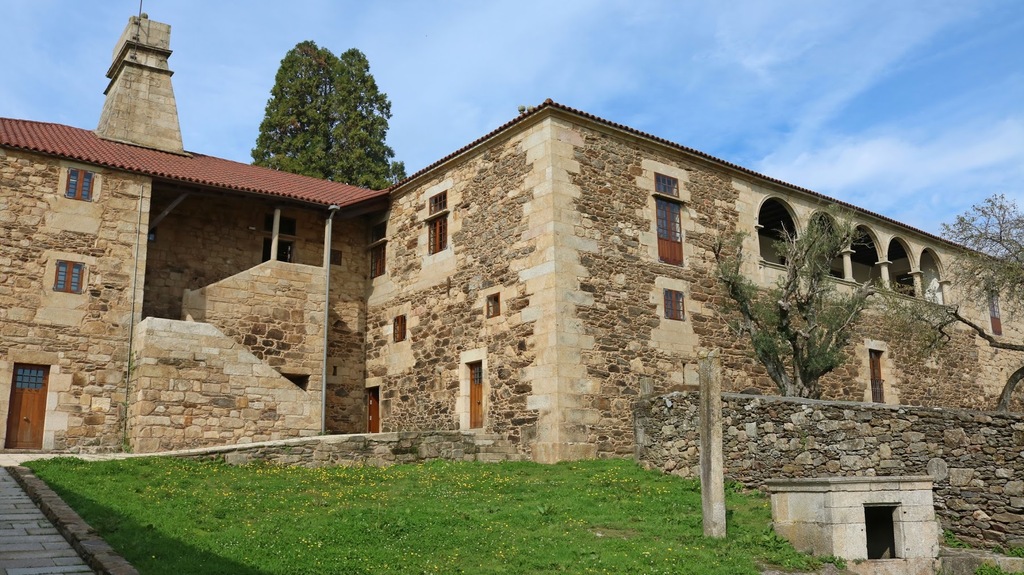
The Town Council of Lalín acquired the estate in 2002, and in 2009, it was declared Site of Cultural Interest (BIC). In its last refurbishment this building recovered its former splendour. Today, it is a sociocultural centre, which hosts the Archaeological Knowledge Management Centre, (CXCA, its acronym in the Galician language), and the Galician Museum of the Marionette
Pazo de Fefiñáns (Cambados)
It was built in the 16th century by Juan Sarmiento Valladares, advisor to King Philip II of Spain. It is a Renaissance style building with Italian influences. Gonzalo Sarmiento de Valladares, viscount of Fefiñáns commissioned the addition of other architectonic elements. Today, it is still owned by the descendants of the Marquises of Figueroa, who live in a part of the pazo. The other part is the winery Bodega Gil Armada and Bodega Palacio de Fefiñanes, the first one to produce wine under the Albariño brand, in 1928.
In the outer corners of the building, there are large circular balconies and windows with Renaissance-style decoration. In the eastern corner of the walls, there is a separate tower, the keep, and a baroque bridge at the northern side. Inside, there is still a small one-hundred year-old vineyard that was the origin of the winemaking activity a century ago.
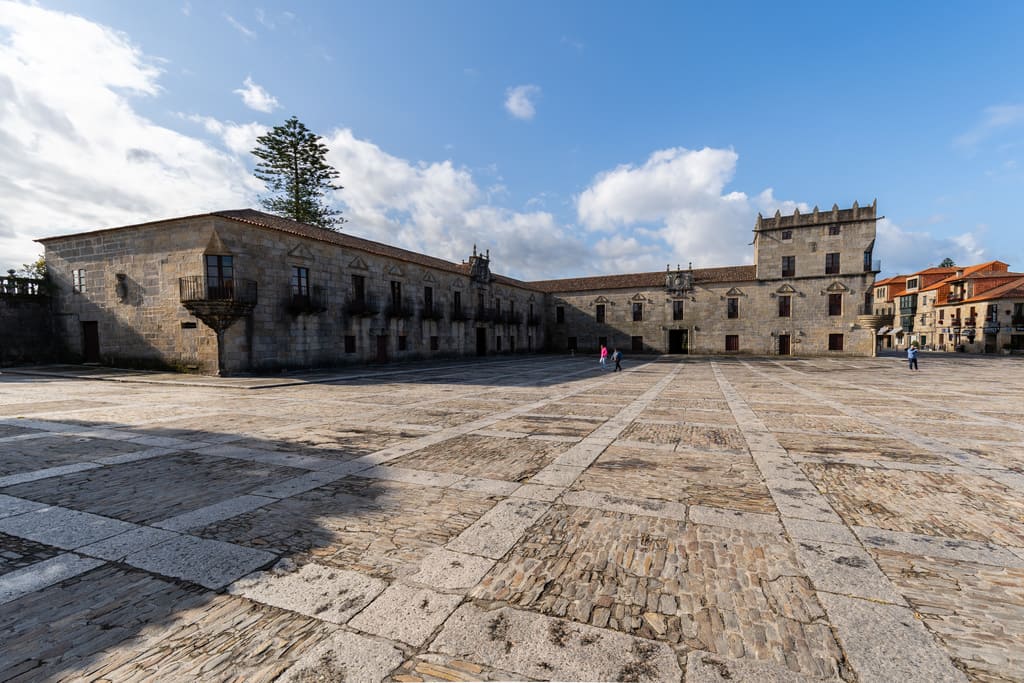
The most important square in Cambados is also known as Fefiñáns. It is one of the most outstanding buildings of the historical building complex. Guided tours of the pazo are organised all year round as well as wine tastings. Its rooms can be rented for special events.
Pazo da Touza (Nigrán)
This estate has a 16th-century historical granite building which was restored in the 18th century and covers more than 20.000 m². The most outstanding elements of the more than 20,000 m² estate are the crenelated tower, the balustrade of the main entrance, the coat of arms, the human figures and the gargoyles with lion heads that protect the native camellia gardens, boasting centuries-old trees and a box hedge maze.
The property was last remodelled in the winter of 2009. Today, the pazo is a haven of peace and tranquillity. The outside part, which has kept its stately appearance, contrasts with the modern inside of the building. This pazo, in the town of Nigrán, is considered one of the most emblematic buildings of O Val Miñor.
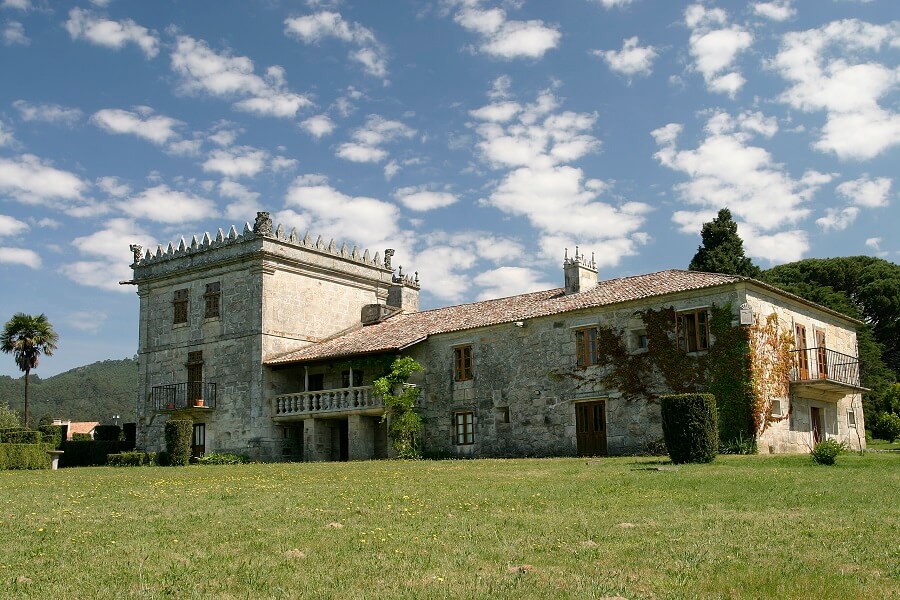
Pazo de Señoráns (Meis)
Enter this pazo, a good example of the Spanish naturalism of the 19th century, and be immersed in the history of the feudal and matriarchal Galicia. This manor house, which is now a winery, is the perfect example of the Galician noble houses. It may date back to the 16th century. It has been linked to remarkable events such as having hosted King Manuel II of Portugal, when the Portuguese Republic was established in 1910, and he had to flee and hide in this ancient house in the village of Vilanoviña, in the town of Meis.
At present, the name of the pazo is linked to the Albariño white wine produced in the Pazo Señoráns. The surrounding vineyards were first planted in the 1980s. The owners, Marisol Bueno and Javier Mareque, were pioneers when, 25 years ago, they trusted in the quality of the Albariño white wine and bet on age-worthy wines, with very good results.
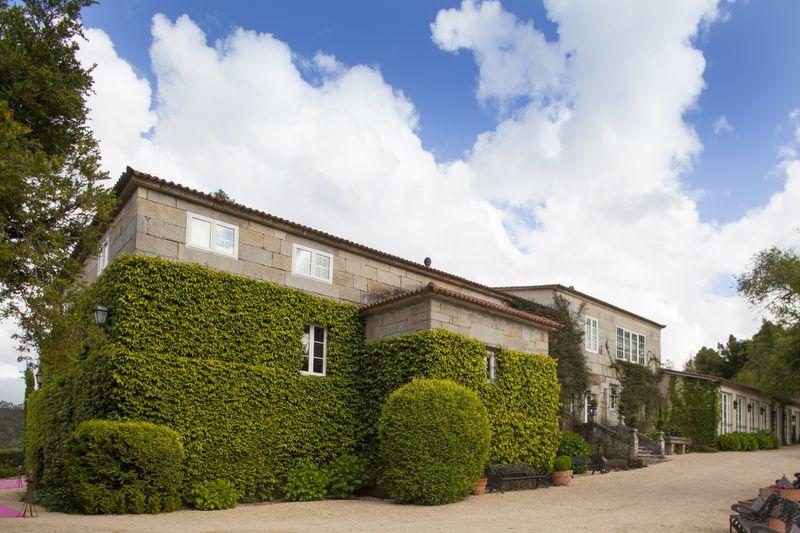
Nowadays, their children have continued their project, sharing their winemaking knowledge with visitors. This winery has also began to produce traditional Galician liqueurs using the grape variety albariña.
Pazo de A Saleta (Meis)
This farmhouse dates back to the 18th century. Its English garden is acknowledged by the UNESCO for having one of the most important private botanical collections in Spain with species from all around the world. It is part of the Route of the Camellia and it can be visited all year round.
The first written evidences about the property date from 1721, when Mateo Pérez Caamaño inherited the land and commissioned the construction of the first farmhouse. Half a century later, his oldest grandson built the chapel devoted to Our Lady of La Salette, to whom the state was named after. In 1967, Margaret and Robert Gimson, a British couple, bought the state with the aim to turn it into an international botanical and landscape reference with the help of the landscape architect Brenda Colvin.
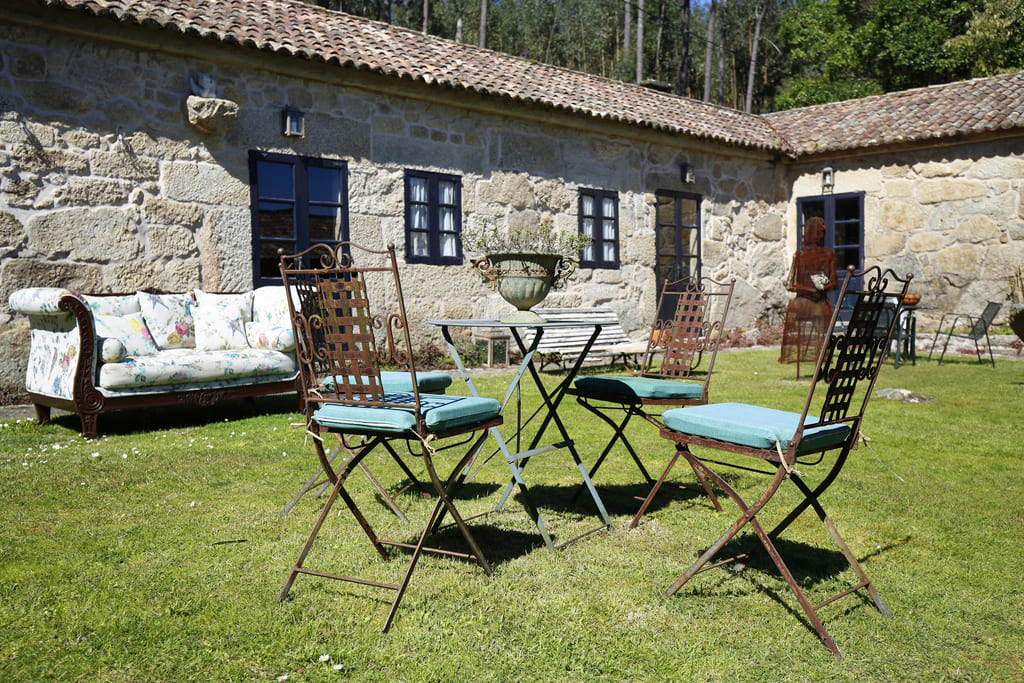
Today, the pazo is private. Since 1996, the Rodríguez-Coladas family have been the owners of the property. In the heart of the town of Meis, they have known how to preserve the botanical legacy left by the British couple, to whom the introduction of unique Camellia species is attributed.
Pazo Gandarón (Pontevedra)
The pazo is located in the parish of Salcedo, very close to the town of Pontevedra. The construction of the manor house Carballeira de Gandarón in the Baroque style was commissioned by the Archbishop Sebastián Malvar Pinto in the late 18th century. Since 1928, it has been the headquarters of the Misión Biológica de Galicia, a research centre belonging to the Spanish National Research Council (CSIC). In the mid-19th century, it became the property of Jerónimo Malvar y Taboada, to whom is attributed its restoration and the creation of the garden.
Its fountains, ponds, the hórreo (typical Galician raised granary house), the chapel – today a museum – or the arbour are the most important architectonic elements of this place, which still preserves its original style. This is the perfect place to enjoy a romantic experience in a space crowned by a 22-pillar hórreo (Galician raised granary). Moreover, its French-style balconies and chimneys stand out.
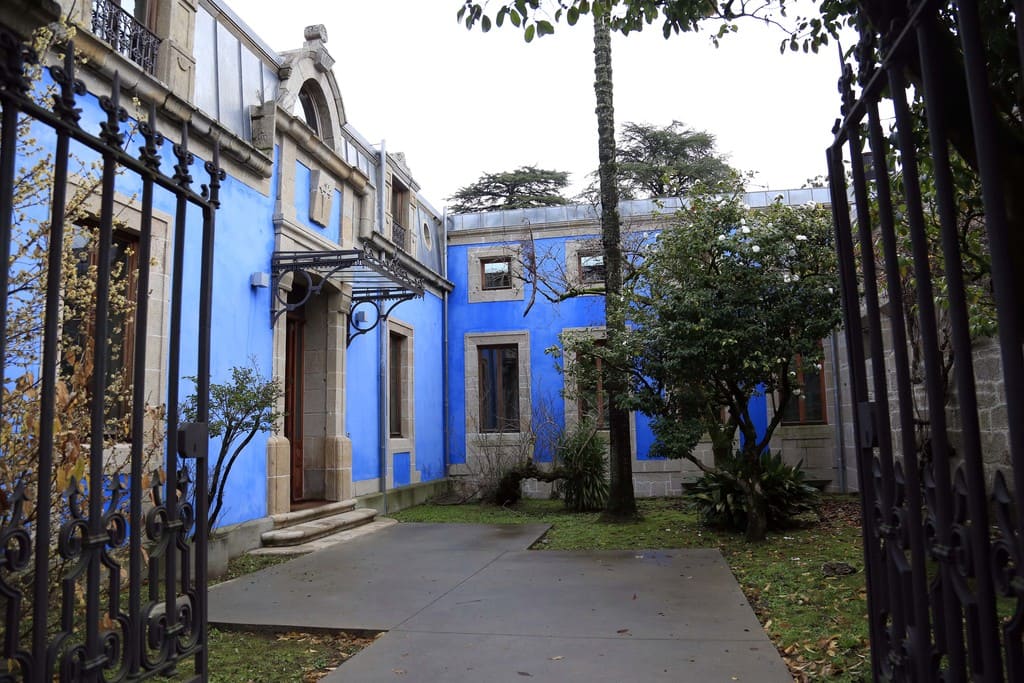
The provincial president Daniel de la Sota established the headquarters of the Misión Biolóxica de Galicia in this pazo. He also opened a museum, restructured the hospital and built new access roads. Nowadays, these public facilities cover 12 hectares and consist of three main buildings and others for services.
Pazo del Conde de Gondomar (Gondomar)
Also known as Pazo do Condo or Pazo de Sarmiento, it used to be the residence of Diego Sarmiento de Acuña, Count of Gondomar, a tittle awarded by the Spanish King Felipe III. The pazo was built on the grounds of the medieval fortress remains. It was declared Monument of Cultural Interest in 1999.
In the 16th century, it was the residence of García Sarmiento y Sotomayor, Lord of Gondomar and Vincios, Peiteiros and Morgadáns, Chief Magistrate of Granada and Captain of the Canary Islands. However, the history of the building is more closely related to his first-born child, Diego Sarmiento de Acuña, Count of Gondomar and born in this pazo. During the reign of King Philip II of Spain, he was one of the leading figures of Spanish diplomacy and was appointed Ambassador of Spain in London.
The pazo lived its heyday with this Count. Then, the estate covered a large land area surrounded by a wall that extended up to the gates of what is now the Town Hall of Gondomar. In the 18th century, a fire damaged the pazo, which would be restored in the 19th century by the heirs of the Galician nobleman. They were linked to one of the most renowned lineages of the Spanish nobility, the Fernández de Córdoba family, descendants of the Grand Captain, so this title was joined to that of the Duchy of Medinaceli.
Pazo Torres de Agrelo (Redondela)
In the 16th century, there used to be a monastery of the Franciscan Order in this place. These monks had previously lived on the San Simón Island and received this land from the Duke of Soutomaior. The building was destroyed after a fire and rebuilt. Later, in the mid-19th century, it was abandoned after the confiscation.
There are no references about the previous owners. The pazo is located on the grounds of the remains of the monastery. In fact, the stones of the original building were used for its construction, around 1865. The history of this pazo of the town of Redondela has been linked to General Antero Rubín Homent, who was born in this municipality and played an important role in the Cuban War. In 1936, the Iturria family acquired the property. It is thought that the grotto and the pond next to the gardens were created at that time, on the model of those of Santa Luzia in Portugal.
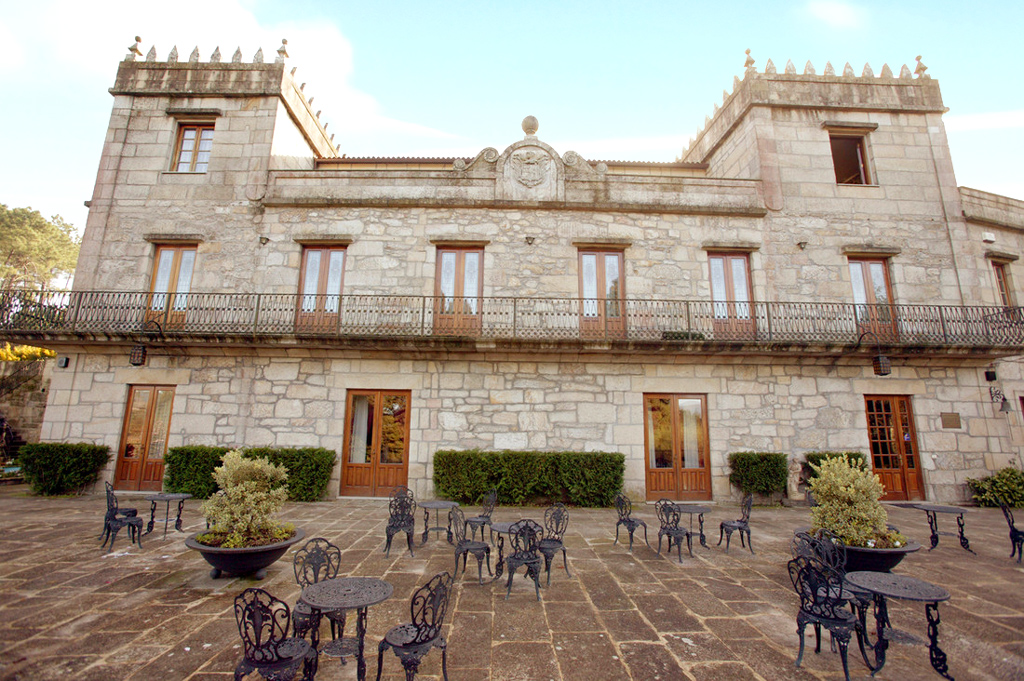
In the beginning of the 21st century, when it was bought by the Marcote family, the property was restored. Today, it is used for winemaking and as a venue for special events. The gardens boast magnificent camellias and several specimens included in the Galician Catalogue of Singular Trees.
Pazo Montesacro (Cambados)
Also known as Pazo de San Tomé, this manor house stands on a hill with sea views, in the town of Cambados. It can be accessed through a small square and an adorned stairway. It was built in the Baroque style by Diego de Zárate y Murga, first Marquis of Montesacro, after the Decree of the Spanish King Philip V of Spain, in the 18th century and in the Baroque style.
In the façade, the elegant coat of arms of Zárate y Murga, crested with the cross of Santiago de Compostela and the crown of the Marquis – from which an arm with a sworn comes out –, stands out. In 1937, the wife of the VIII Marquis of Montesacro, Juana María Grisone, became a widow without children and decided to sell the pazo. At first, the property was supposed to pass into the hands of a renowned local businessman, but finally the family decided to transfer it to the Sisters of Charity, so that they could extend the old people’s home, which at that time was located in the Pazo de Torrado.
It has a peculiar history, since the manor house was used for social purposes. Thus, in 1942, it was restored to be adapted to serve the purpose of a retirement home, which is still running nowadays.






